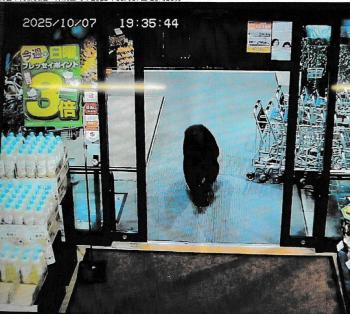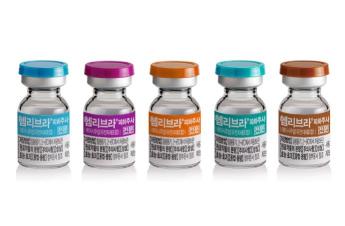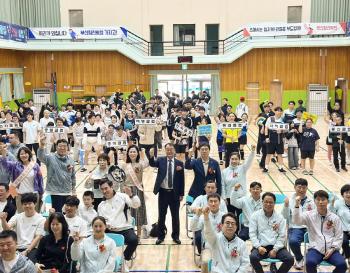'K Motors' Serves as Strong Support for Korea's Economy
Jun 27, 2025
|
In particular, Hyundai Motor Group, which leads the Korean automobile industry, showed the largest economic contribution among domestic groups (business groups) last year.
The Hyundai Motor Group's performance is not just within the group, but is spreading in a virtuous cycle that promotes national economic development and shared growth of stakeholders.
However, the importance of the Korean automobile industry is drawing more attention than ever as the global automobile industry is in a complex crisis, such as expanding protectionism, increasing geopolitical risks, and intensifying competition for future vehicle leadership.
Hyundai Motor Group plans to continue to contribute to strengthening national competitiveness by supporting the development of the national economy, promoting the shared growth of stakeholders, and leading the development of advanced technologies to help Korea leap to a mobility innovation hub.
K-Car, South Korea's economic support
The Korean automobile industry, which combines finished cars and auto parts, supports the Korean economy through export production inducement effects, quality jobs, and balanced national development.
According to the Korea International Trade and Industry Research Institute of the Korea International Trade Association, the production inducement of exports to the Korean automobile industry reached $236.5 billion last year. This has been ranked first among Korea's major export items for three consecutive years, proving that exports to the automobile industry have the greatest production inducement effect.
The production inducement effect of exports is an indicator of how much production activity occurs in Korea to make a product when an industry exports a product abroad. Industries with high production inducement effects of exports actively increase domestic production of related industries and thereby increase the competitiveness of the overall industrial ecosystem by leading to employment and investment expansion.
The automobile industry recorded a higher production inducement amount of exports than other industries such as semiconductors and general machinery due to the large front and rear chain effects due to the nature of the industry.
The export and trade balance of the automobile industry also performed well last year. Exports of finished vehicles reached $70.8 billion last year, surpassing $70 billion for the second consecutive year despite slowing global demand centered on electric vehicles. Total exports of "K-automobiles," including auto parts, also hit $93.3 billion, close to the record $93.8 billion in 2023.
The trade surplus hit an all-time high of $72.7 billion. This is more than 1.4 times the nation's total trade surplus last year, and played a decisive role in turning the national trade balance into a surplus last year. The ratio of trade surplus to exports was 78%, outpacing semiconductors (49%) and general machinery (40%), showing high efficiency in acquiring foreign currency among major export items.
K-automobiles are also contributing greatly to the national economy in terms of jobs. According to the Korea Automobile Mobility Industry Association, the number of direct and indirect employees in the automobile industry reached about 1.5 million. This is far ahead of the number of direct and indirect employees in the steel (410,000) and semiconductor (280,000) sectors calculated using the Bank of Korea's Input-Output Table (2022) and is about 2.6 times the total number of employees in Ulsan Metropolitan City.
In particular, the automobile industry is characterized by providing quality jobs. According to a survey by the National Statistical Office, the average wage of the automobile industry as of 2023 was 60.91 million won, 13% above the average wage of the domestic manufacturing industry of 53.77 million won.
In terms of revitalizing the local economy, the automobile industry is also contributing to balanced national development by creating local jobs through local investment based on evenly distributed production facilities across the country.
According to a 2023 National Statistical Office survey on the proportion of production by region (based on production amount) of major domestic industries, 82% of semiconductors were concentrated in the metropolitan area and 80% of shipbuilding in the southeast area, while the automobile industry was evenly distributed across the country, including ▲ 35% in the southeast area ▲ 29% in the metropolitan area ▲ 16% in Chungcheong area ▲ 11% in Honam area ▲ 9% in Daegu and Gyeongbuk area. Through this, the automobile industry is contributing to laying the foundation for long-term independence for each region, such as easing the concentration of the youth population in the metropolitan area and promoting local income growth and consumption.
In addition, production (based on Statistics Korea) accounts for 14.5% of the total manufacturing industry and 12.1% of added value as of 2023, and tax revenue is 42 trillion won as of 2022, 1.4 times the national R&D budget.
The rising global status of 'K-automobiles'… The preparation for the future also accelerates
K-automobiles continues to grow despite difficult external conditions, further increasing their presence in the global market.
The export unit price per car, one of the indicators of automobile product competitiveness, recorded $23,048 last year. This is a more than 40% increase compared to 2019, five years ago, and this is due to the continued increase in exports of high-value-added vehicles such as SUVs and eco-friendly cars. This shows that our automobile industry is growing not only quantitatively but also qualitatively.
Korea's automobile production reached 4.13 million units last year, surpassing 4 million units for the second consecutive year following the previous year. It is a production that leads not only major advanced countries such as the UK, France, and Canada, but also automobile production powers such as Brazil and Thailand.
The growth of Hyundai Motor and Kia, which represent the domestic automobile industry, is also outstanding. Hyundai Motor and Kia ranked as the "big three" globally for the third consecutive year, with a combined sales of 7.23 million units last year. It has been selected five times in the past six years as the world's most prestigious automobile industry award, WCOTY, and has proven its product competitiveness.
The auto parts industry is also making progress. Last year, 10 Korean companies, including Hyundai Mobis and Hyundai Transys, were listed on the list of the top 100 global parts makers in terms of sales announced by the U.S. Automotive News. Compared to 10 years ago, twice as many domestic companies were included in the rankings.
Amid fierce competition for survival in the global automobile market, Korean companies are striving to strengthen their growth base by securing new production facilities and logistics bases in Korea.
Kia completed 'Gwangmyeong EVO Plant', Korea's first electric vehicle plant, last year and is producing EV3 and other products. In the second half of this year, Hwaseong EVO Plant will be completed and PBV production will begin. Hyundai Motor is building a plant dedicated to Ulsan EV with the aim of operating it in the first half of 2026.
Hyundai Mobis recently established a large-scale integrated distribution center in Gyeongju, Gyeongsangbuk-do. The new logistics center, which spent a total of 97 billion won to build, plays a role in quickly and accurately circulating domestic A/S (post management) parts to more than 1,000 logistics networks nationwide.
In the future, the automobile industry is expected to grow and change rapidly in the future through convergence with advanced technologies such as AI (artificial intelligence), ICT (information and communication technology), semiconductors, and batteries.
Autonomous driving technology using AI is expected to lead the development of sensor technology and high-performance computing technology. Connected cars are expected to develop communication technology and communication security technology for 5G/6G vehicles, and electric and hydrogen electric vehicles are expected to lead the development of vehicle battery technology, fuel cell technology, and energy management technology.
Hyundai Motor Group's economic contribution, the largest among domestic groups
According to an analysis by CEO Score, a corporate data research institute, of the top 100 companies in 2024 that submitted business reports among the top 500 companies (excluding public enterprises and financial companies), Hyundai Motor Group (9 companies) had the largest economic contribution of 359.438.4 trillion won among domestic groups.
The economic contribution, which Hyundai Motor Group ranked first among domestic groups, adds all the economic value created by companies through management activities and is mentioned as an evaluation index to examine the impact and ripple effects of a company on the economy. It is calculated as the sum of expenses paid to stakeholders in the form of employee salaries, partner payments, government corporate tax, shareholder dividends, and donations.
Hyundai Motor Group's economic contribution of 359.43 trillion won last year increased by 6.1 percent compared to 2023 (338.7143 trillion won), and its share of the total economic contribution of the top 100 companies rose 0.5 percentage points from 21.8 percent in 2023 to 22.3 percent in 2024.
Hyundai Motor Group's economic contributions specifically consisted of ▲ partner companies (transaction price) 306.6295 trillion won ▲ executives (salary, etc.) 34.59 trillion won ▲ government (taxes, etc.) 9.2613 trillion won ▲ shareholders (dividends, etc.) 7.58 trillion won ▲ creditors (interest) 1.5994 trillion won ▲ society (contributions) 307.8 billion won.
Hyundai Motor Group was found to have the greatest ripple effect on the overall economy compared to other domestic groups. Hyundai Motor Group's economic contributions last year significantly exceeded those of three major domestic groups, ▲ A Group (8 companies), ▲ B Group (8 companies), 190.173 trillion won, ▲ C Group (10 companies), and 145.3347 trillion won.
The nine Hyundai Motor Group companies' individual economic contributions were ▲Hyundai Motor Company 115.2187 trillion won ▲ Kia 86.59 trillion won ▲ Hyundai Mobis 52.1965 trillion won ▲ Hyundai Engineering & Construction 30.292.1 trillion won ▲ Hyundai Glovis 25.447 trillion won ▲ Hyundai Steel 15.479 trillion won ▲ Hyundai Engineering 15.17 trillion won ▲ Hyundai Transys 11.7964 trillion won ▲ Hyundai Wia 7.4013 trillion won.
In particular, Hyundai Motor, Kia, and Hyundai Mobis, the main affiliates of Hyundai Motor Group, were listed in the top five economic contributions among the top 100 individual companies.
The reason Hyundai Motor Group was able to generate the largest economic contribution among the domestic groups is that it consists of a number of affiliates with a solid business structure that has a large ripple effect in front and rear-related industries such as automobiles and construction, and has actively implemented shareholder-friendly policies such as expanding dividends based on its recent improved performance.
K-Car seeks solutions to break through the complex crisis
Meanwhile, on the 24th (Tue), the Korea Automobile Mobility Industry Association (KAIA) held the 42nd Automobile Mobility Industry Forum at the Automobile Hall in Seocho-dong, Seoul, and sought solutions for the sustainable development of the Korean automobile industry.
The automobile industry is an 'industry of industries' that has a wide impact on the front and rear industries, and has played a key role in our economy by creating direct and indirect employment of about 1.5 million people, said Kang Nam-hoon, chairman of the Korea Automobile Mobility Industry Association. "In this transition period, the crisis in the automobile industry can soon lead to a crisis in the national manufacturing industry, so policy support to turn it into an opportunity is urgently needed."
Cho Chul, a senior researcher at the Korea Institute of Industrial Economics and Trade, emphasized that Korea's automobile industry is an important industry, accounting for 12.1% of manufacturing value-added production and 14.8% of total exports.
Kim Joon-ki, managing director of the Korea Automobile Mobility Industry Association (KAMA), presented policy tasks to overcome the crisis and secure future competitiveness such as ▲ establishing a tax system to promote domestic production and extending the tax reduction for old cars ▲ expanding the supply of eco-friendly cars such as expanding subsidies for electric cars and establishing all subsidies for hydride cars ▲ supporting the future transition of parts and components industry as policy tasks to overcome the crisis.
Editor Song Moon-cheol mc.song@carguy.kr
This article was translated by Naver AI translator.














